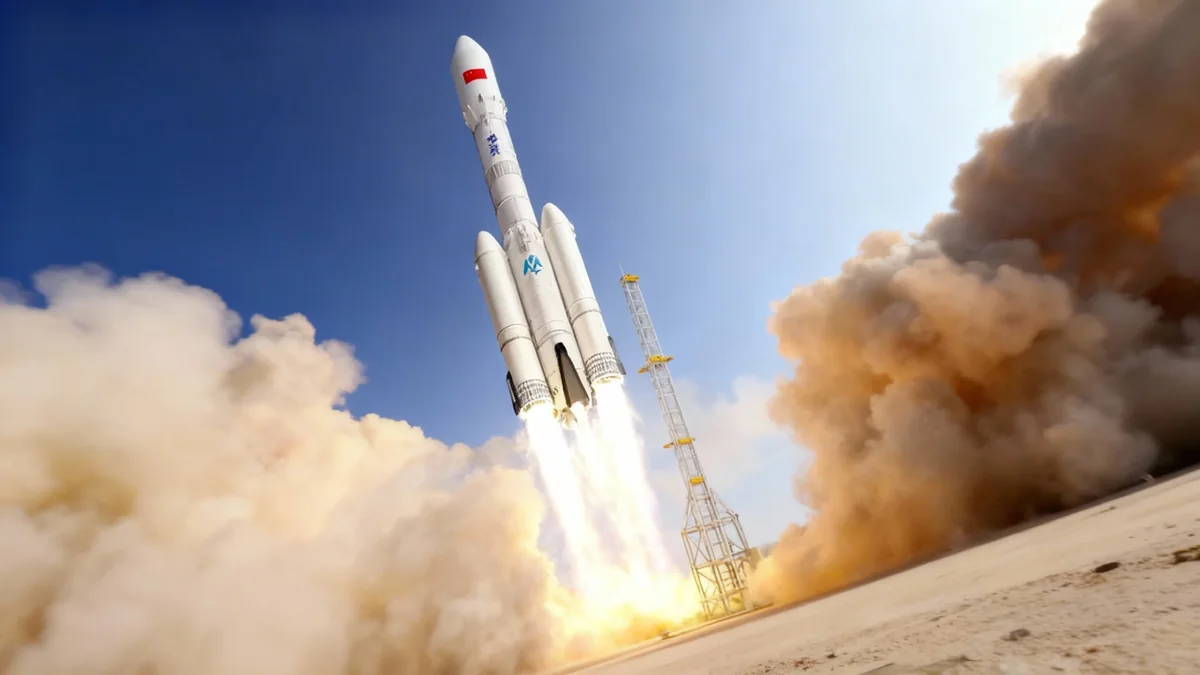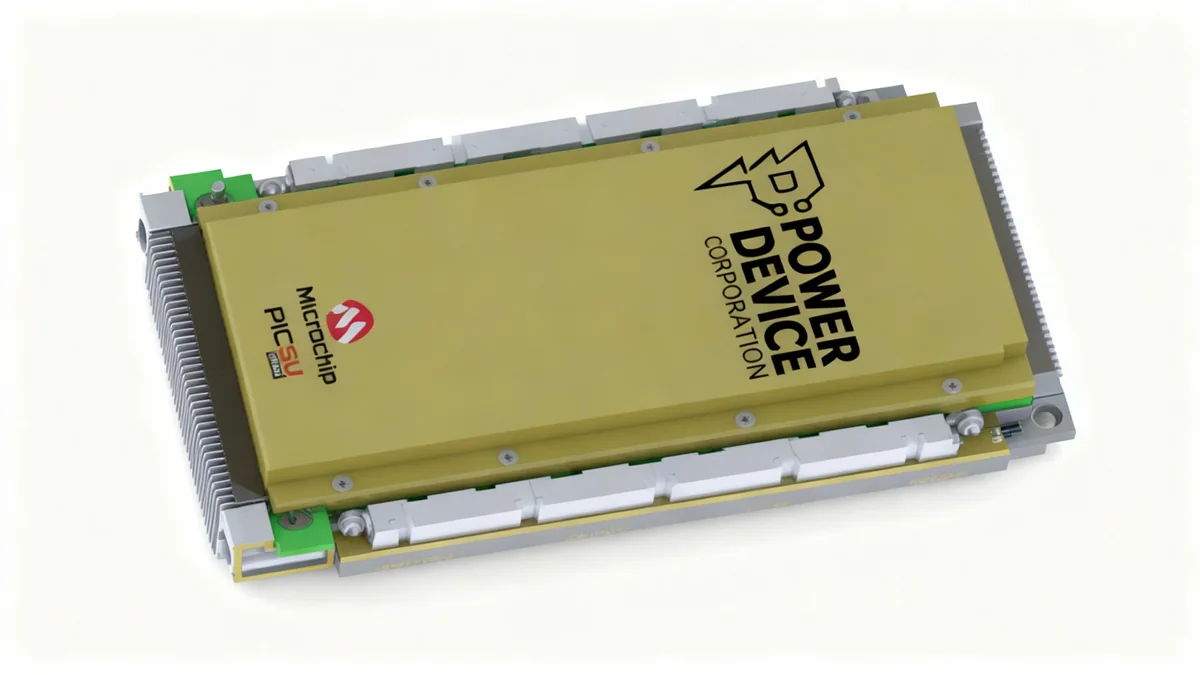Chinese aerospace company LandSpace has successfully completed a critical static-fire test of its Zhuque-3 rocket, a significant milestone that moves the vehicle closer to its inaugural orbital flight. The test, conducted this week, is a key step in verifying the performance of the reusable rocket's first-stage engines ahead of a planned launch and recovery attempt later this year.
The successful engine firing at a facility in northwestern China keeps the Zhuque-3 on schedule to become the country's first reusable orbital-class launcher. The development places LandSpace in direct competition with established players in the global launch market, signaling a new phase in the commercial space race.
Key Takeaways
- LandSpace conducted a successful static-fire test of its reusable Zhuque-3 rocket.
- The rocket's design features a reusable first stage and is visually similar to SpaceX's Falcon 9.
- Zhuque-3 is powered by nine methane-fueled Tianque-12A engines.
- The company aims for an orbital launch and first-stage recovery attempt before the end of the year.
A Crucial Pre-Flight Milestone
The static-fire test involved firing all nine first-stage engines while the rocket remained secured to the launch pad. This procedure is a standard industry practice designed to validate the performance of the propulsion system and integrated vehicle systems under flight-like conditions without leaving the ground.
According to LandSpace, this test concluded the initial phase of the maiden flight campaign. The company confirmed that the vehicle performed as expected. Prior to the engine firing, the team also completed a full fueling test, ensuring all ground and vehicle systems are ready for flight operations.
With this phase complete, the Zhuque-3 will undergo a vertical integration rehearsal. Afterward, it will be returned to a technical zone for detailed inspection and maintenance. These steps are the final preparations for its first orbital launch mission.
What is a Static-Fire Test?
A static-fire test is a full-duration engine firing of a rocket's stage while it is firmly anchored to a test stand. It allows engineers to collect critical data on engine performance, thrust, vibrations, and the interaction of all vehicle systems, providing a final dress rehearsal before the actual launch.
The Technology Powering Zhuque-3
The Zhuque-3 is a two-stage rocket constructed from stainless steel, a design choice also seen in SpaceX's Starship program. It stands 217 feet (66 meters) tall and is designed to lift significant payloads into orbit. The first stage, which is intended for recovery and reuse, is powered by nine Tianque-12A engines developed in-house by LandSpace.
Propulsion and Payload
One of the most notable features of the Zhuque-3 is its choice of propellant. The Tianque-12A engines burn a combination of liquid methane and liquid oxygen (LOX). This is a departure from the rocket-grade kerosene used by SpaceX's Falcon 9 but aligns with the next-generation technology used for the Raptor engines on Starship.
Methane is considered a more efficient and cleaner-burning fuel that produces less soot, which can simplify the process of engine reuse. This forward-looking decision highlights LandSpace's ambition to develop a highly reusable and cost-effective launch system.
Zhuque-3 at a Glance
- Height: 217 feet (66 meters)
- First Stage Engines: 9 x Tianque-12A
- Propellant: Liquid Methane and Liquid Oxygen (Methalox)
- Payload to Low Earth Orbit (LEO): 40,350 pounds (18,300 kg)
LandSpace and the Commercial Space Market
Founded in 2015, Beijing-based LandSpace has quickly emerged as a leading private aerospace firm in China. The company has already achieved significant success with its expendable Zhuque-2 rocket.
In July 2023, the Zhuque-2 became the world's first methane-fueled rocket to successfully reach Earth orbit, a major achievement in the global space industry. The rocket went on to have a string of four consecutive successful launches, demonstrating the reliability of its methalox engine technology before experiencing a failure on its most recent flight in August.
The development of the reusable Zhuque-3 represents a logical and ambitious next step. The rocket's payload capacity of 18,300 kg to LEO is comparable to that of established launchers, positioning it to compete for commercial satellite deployment contracts. For comparison, a fully expendable Falcon 9 can carry approximately 22,800 kg to the same orbit.
"The vehicle will next proceed with planned vertical integration rehearsal, before returning to the technical zone for inspection and maintenance in preparation for its upcoming orbital launch and first-stage recovery," LandSpace stated following the test.
Looking Ahead to Launch
The successful static fire builds on a series of developmental milestones for the Zhuque-3 program. Last year, LandSpace conducted low-altitude launch and landing tests with a prototype vehicle, often referred to as "hopper" tests, to validate the vertical landing technology required for first-stage recovery.
With the completion of this latest test, all eyes are now on the upcoming launch from the Dongfeng Commercial Space Innovation Pilot Zone. A successful orbital flight and, more importantly, a successful recovery of the first stage would make LandSpace only the second private company in the world to achieve this feat.
This would not only be a landmark achievement for the company but also a major advancement for China's commercial space capabilities, potentially altering the landscape of the global launch market by introducing a new, competitive reusable rocket system.





